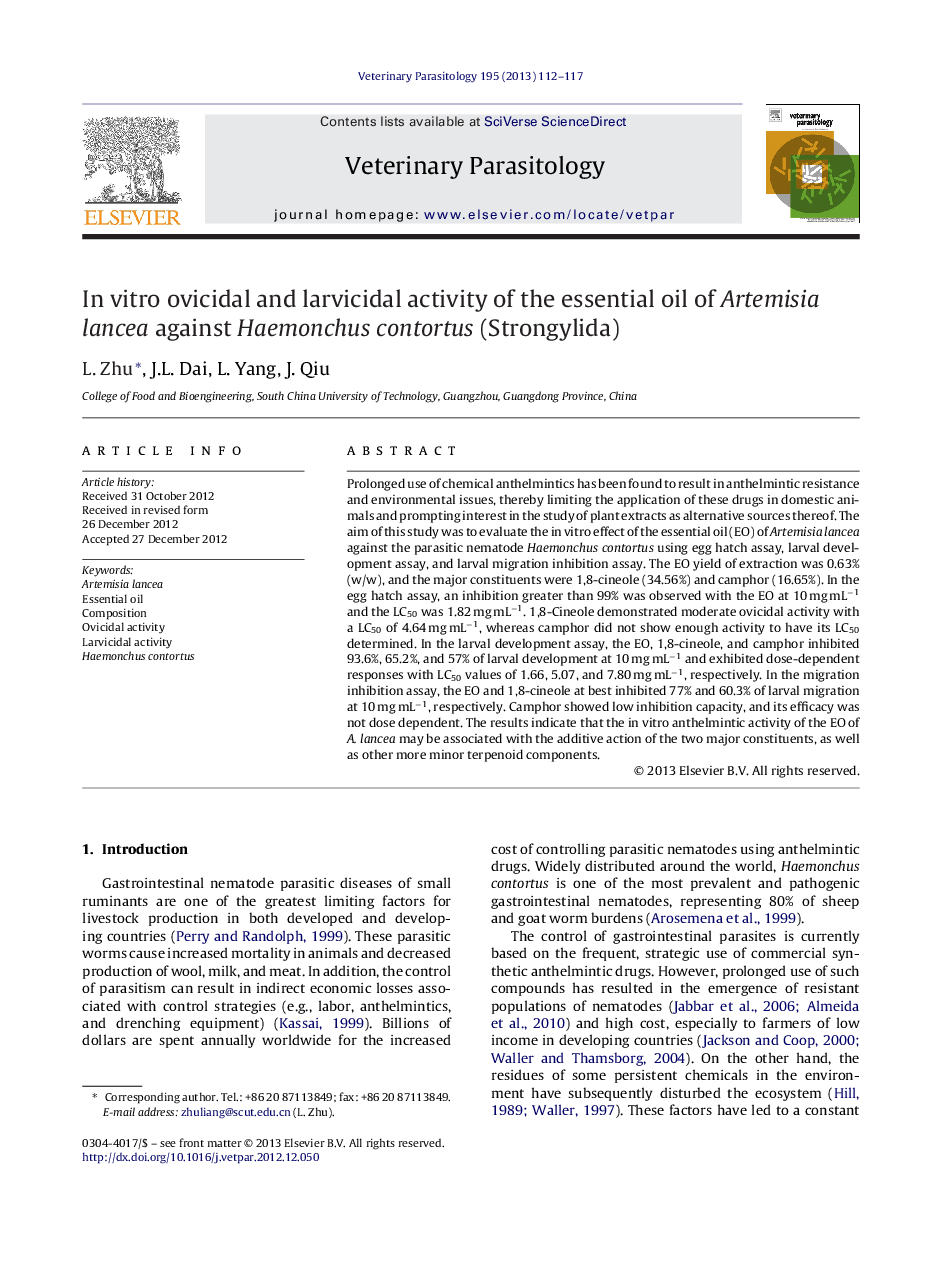| Article ID | Journal | Published Year | Pages | File Type |
|---|---|---|---|---|
| 5804104 | Veterinary Parasitology | 2013 | 6 Pages |
Prolonged use of chemical anthelmintics has been found to result in anthelmintic resistance and environmental issues, thereby limiting the application of these drugs in domestic animals and prompting interest in the study of plant extracts as alternative sources thereof. The aim of this study was to evaluate the in vitro effect of the essential oil (EO) of Artemisia lancea against the parasitic nematode Haemonchus contortus using egg hatch assay, larval development assay, and larval migration inhibition assay. The EO yield of extraction was 0.63% (w/w), and the major constituents were 1,8-cineole (34.56%) and camphor (16.65%). In the egg hatch assay, an inhibition greater than 99% was observed with the EO at 10 mg mLâ1 and the LC50 was 1.82 mg mLâ1. 1,8-Cineole demonstrated moderate ovicidal activity with a LC50 of 4.64 mg mLâ1, whereas camphor did not show enough activity to have its LC50 determined. In the larval development assay, the EO, 1,8-cineole, and camphor inhibited 93.6%, 65.2%, and 57% of larval development at 10 mg mLâ1 and exhibited dose-dependent responses with LC50 values of 1.66, 5.07, and 7.80 mg mLâ1, respectively. In the migration inhibition assay, the EO and 1,8-cineole at best inhibited 77% and 60.3% of larval migration at 10 mg mLâ1, respectively. Camphor showed low inhibition capacity, and its efficacy was not dose dependent. The results indicate that the in vitro anthelmintic activity of the EO of A. lancea may be associated with the additive action of the two major constituents, as well as other more minor terpenoid components.
